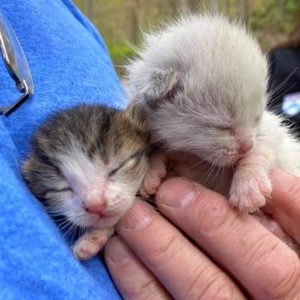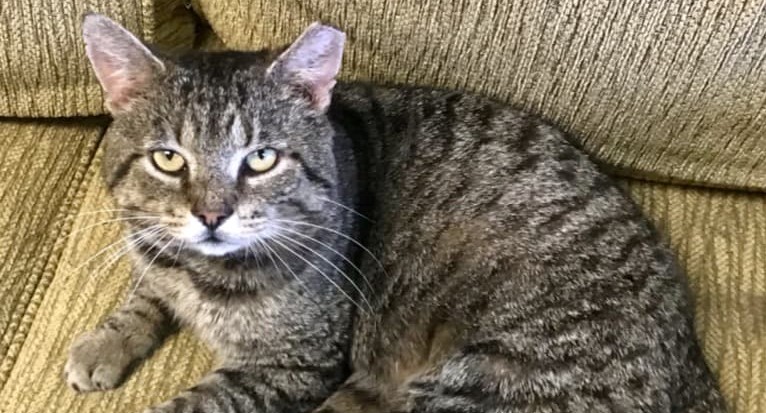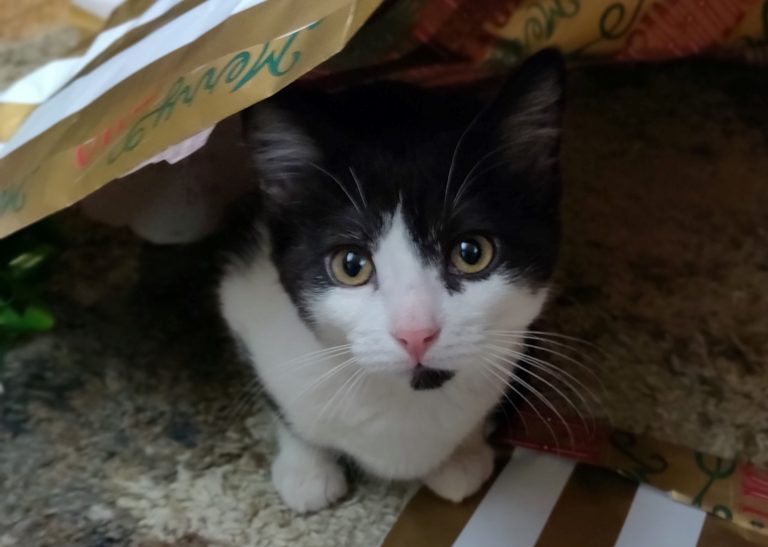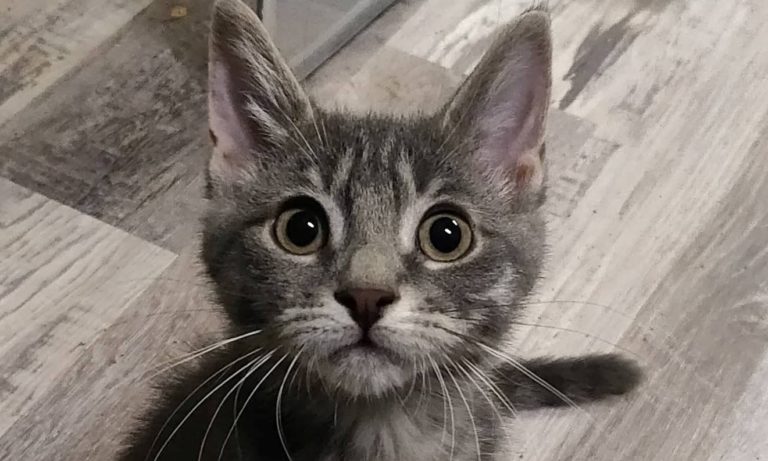Anyone volunteering for a cat rescue is all too familiar with the term “kitten season”, but we often get a funny look when we mention it to some others. And then there are some people who have heard the term but aren’t sure what exactly kitten season is.
What Exactly is Kitten Season?

Kitten season is the time of year when female cats are most likely to go into heat, and they give birth to the most litters of kittens. According to the ASPCA, kitten season typically begins in March and lasts until about October, the warmer months of the year.
Female cats can go into heat as early as four months old. According to the Pet Health Network, cats reproduce almost as abundantly as rabbits do. (It is interesting to note that, according to Michelson Found Animals, the cat population grows at a faster rate than the dog population does.) The Spruce Pets informs that with the cat gestation period being only about two months, one cat could have as many as five litters over the course of one kitten season. Considering that each litter is comprised of and average of four kittens, one female cat could potentially give birth to 20 kittens in a year. And, according to Roice-Hurst Humane Society, a female cat is able to have over 100 kittens during her reproductive years.
In fact, Michelson Found Animals explains that during the seven-day period when a female cat is in heat, she can become impregnated by multiple male cats and have the multiple male cats’ litters at once—meaning that she can give birth to multiple litters from different fathers at the same time!
What Does Kitten Season Mean for Rescues and Fosters?
Kitten season is when rescues and shelters become overpopulated with cats and kittens, and the kittens are badly in need of fosters to care for them until they are old enough to be adopted.
For the rescuers and volunteers, kitten season brings the threat of compassion fatigue, which is the term used to describe what happens when rescuers become overwhelmed by the emotional toll that being involved in rescue can take. As the Cole and Marmalade website explains, “It’s difficult for an animal lover, let alone an animal rescuer, not to feel pain knowing the tragedy an animal has endured. It’s something that you carry with you, and you try your best to ensure that as long as that animal is in your care, you never want them to feel pain like that ever again.”
During the height of kitten season, fosters and volunteers are easily becoming overwhelmed. The hotline number for the rescues are full of messages about kittens being found that need someone to take them in. Fosters are feeling compelled to take on more than they can reasonably handle because they know there’s nowhere else for the kittens to go. Caretakers who feed and clean in the shelters are also becoming overwhelmed because their facilities are at maximum occupancy.
By the time summer is about to come to an end, most rescuers and fosters are feeling burnt out and exhausted, but know they still have a few more months ahead as the last litters of the current kitten season are just being born. These fosters still have their own personal pets, their children, their jobs, and their households to keep up with. But, they still make the time to selflessly do this life-saving work. The trappers are feeling like they will never get ahead of the problem. It feels like for every cat they trap-neuter-return (TNR), a new pregnant cat is dumped at the colony.
During kitten season, the number of adult cats that are adopted drops significantly, because most people would rather adopt a kitten. This means rescues also have to deal with adult kitties not getting adopted as quickly during kitten season, which also means they can’t take in more adults because there is no room open at the shelter or in the foster homes.

The most vulnerable kittens from kitten season are the neonatal kittens (kittens that range from newborns to 4 weeks of age). These kittens cannot survive on their own and need round-the-clock care, including bottle feeding and helping them with everything else their mother would normally do from stimulating them to go potty and keeping them clean, to teaching them to wean onto solid food. That’s why foster volunteers are a crucial component of any shelter volunteer program during kitten season. According to the ASPCA, kittens make up a large part of the 3.2 million cats that enter shelters every year. Sadly, about 860,000 of these felines are euthanized. Because these kittens require so much 24/7 care, and most shelters don’t have the resources to provide that level of care, they have no choice but to euthanize them when they can’t find a bottle-feeder foster to take them.
The Number One Way to Make Kitten Season Easier

That sobering euthanasia statistic is why the number one way to combat the challenges of kitten season to spay and neuter cats to prevent this overpopulation of kittens, which ultimately leaves shelters overcrowded.
There are tens of millions of stray cats living outside in colonies across the country that contribute to these annual breeding cycles. We can all help to prevent this by contacting local trap-neuter-return organizations that will typically loan you a trap to catch the local strays. They are then spayed or neutered and then returned to your neighborhood. In fact, several of the volunteers at Cat Tales regularly help people with trapping projects, handling the trap-neuter-return for the folks who call them.
According to the Pet Health Network, it is just as crucial to spay and neuter even indoor cats, because it only takes a moment where the door is open and an indoor cat can sneak outside and come back pregnant. When a cat goes into heat, she is driven by her hormonal urges to breed, so even if she normally shows no interest in getting out, once she goes into heat, she could become suddenly determined to make a break for it when you are not prepared—and that’s all it takes.
As mentioned above, cats can go into heat as early as four months old, so it’s crucial to get kitties spayed as early as it is safe to do so. Twenty years ago, it was typical to wait until your kitty was six months old to get her spayed. But, kittens can now be spayed as soon as it’s safe to get anesthesia, when they are two to three pounds, which is when they are about two to three months old. Known as a “pediatric spay/neuter”, it is becoming increasingly popular due to the many advantages. DVM360 explains that these procedures are easier, faster, and less expensive than they are in adult animals. Additionally, they state that with shorter surgery times and shorter anesthetic episodes, the incidence of perioperative complications is low.
Whether spays and neuters are done at two or three months or somewhere in between depends on the particular protocols of the veterinarian. The vets that Cat Tales works with prefer to wait until three months to lessen the risks of complications from anesthesia.
Debunking the Old Wives’ Tales
Unfortunately, there are still many old wives’ tales that people still believe, since they continue to be passed down from generation to generation. Two things we still hear all the time is that people think that it is somehow beneficial for a cat to go into heat at least once or to have at least one litter of kittens before being spayed. This could not be further from the truth.
Of course, the most obvious reason this is incorrect is the previously discussed feline overpopulation crisis. The last thing we need is for people to purposefully get their cats impregnated because some myth informed them it was beneficial.
Additionally, neither going into heat or having at least one litter offer any health benefits for cats. In fact, according to State Road Animal Hospital, spaying or neutering can help to protect your pet’s health. Male cats benefit from reduced rates of testicular cancer and female cats are less likely to develop mammary cancer and will never develop pyometra, a potentially life-threatening uterine infection. Spayed and neutered pets are also less likely to roam or spray urine to mark territory.
Plus, Web MD Pets informs that if you spay before the first heat it is a much easier medical procedure. All the benefits you get from spaying or neutering a cat are magnified by spaying or neutering before the animal reaches puberty.
How Else Can You Help Make Kitten Season Easier?
One of the most effective ways you can help is to volunteer with your local rescue. Every rescue is always in need of more volunteers. Ideally, you can foster since having extra places for the abundance of kitties to go is crucial to saving them. Especially with kittens, you really only need a bathroom to keep them in and your local rescue will provide the support and guidance required to get you started.

If you are not in a position to foster, there are so many other ways you can help your rescue or shelter about which you may not be aware. For example, if you can help with trapping or transporting kitties, feeding and cleaning, processing adoption applications, kitten-sitting so that fosters can take much-needed vacations, and more. Just reach out to the organization and start a conversation to find out where the volunteer team needs help that fits with your abilities.
Not able to volunteer in anyway, but still want to help? Shelters and fosters greatly appreciate any donations you can provide. Most rescues and fosters provide information about how to donate monetarily or provide links to donate items from their Amazon wishlists.
Of course, if you have been considering adopting, kitten season is the perfect time! It is a win-win situation for adopters to adopt a cat or kitten during kitten season, because it frees up space at the shelter while also providing the adopter the widest selection of cats and kittens to choose from.
The kitties can’t help themselves to combat the struggles of kitten season. It is humans being irresponsible with their pets that has led to years of out-of-control breeding that resulted in this cat over-population crisis. That’s why it is our responsibility to help end the cycle.







I can foster a kitten